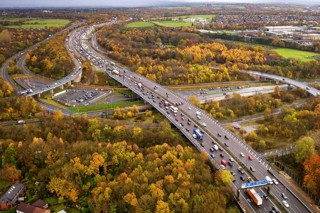Highways England and Network Rail are working more closely together to help establish more parkway stations across the UK and reduce congestion in town centres.
Parkway stations – those located on the outskirts of major urban centres that can serve as a ‘park and ride’ interchange for passengers – can improve access into towns and cities, and relieve pressure on the strategic road network (SRN) by reducing car use and encouraging the use of public transport.
There are currently over 30 parkway stations across the UK, but both Highways England and Network Rail want to make it easier for local authorities, Local Enterprise Partnerships, strategic planners and third-party funders to assess whether a parkway station is the right transport solution for their region, and how it might be delivered for the benefit of local transport users.
Simon Emery, Highways England growth and economic development manager, said: “We recognise that to plan strategically for the future we need to understand the role that our strategic road network plays within the wider transport system.
“Our strategic planning partnership with Network Rail is a logical, important part of this.
“How people travel into and out of our urban centres is an aspect of work where it’s vital we understand the role that the rail network can play alongside that of road.
“Both our networks have experienced significant change, some of which may prove to be permanent, as a result of Covid-19.”
Where a parkway station is identified as a feasible solution by local stakeholders, funders and planners, Network Rail and Highways England will work with them to consider the most appropriate locations for development.
They will assess the impact of such a development on the rail network and SRN – for example, whether there is a risk of additional congestion.
Mike Smith, Network Rail’s strategy and planning director, system operator, said working more closely with Highways England will better serve rail and road users.
He said that while both transport systems are largely physically separated, they are inextricably linked and passengers expect the transport system to work smoothly as one.
Smith added: “We want to work with partners to deliver better transport links for rail and road users, and urge them to engage with us early in the process.
“Through taking a more holistic approach to how we manage Britain’s transport system, we can improve customers’ end-to-end journeys.”





















Login to comment
Comments
No comments have been made yet.